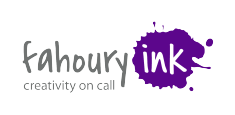Whether it’s a function of limited time, no budget or simply lack of desire, spelling and grammar errors have reached epidemic proportions across all communication channels.
Trust us: Nothing diminishes the effectiveness of your hard work faster than a typo on your website, in your email blast or on your PowerPoint slide. You look lazy, sloppy or worst of all, just plain dumb.
Avoid the typo trap with these quick tips for more effective proofreading:
Never rely solely on spellcheck. Microsoft has made idiots out of more people than reality TV. Spellcheck was never intended to replace the human eye, brain or capacity for common sense.
Take a break. Allowing time between writing and proofreading gives you distance from the material so you can return with a fresh eye and mind.
Don’t proof on-screen. Print out your document, put it aside for at least 15 minutes (the aforementioned break) and you’ll be much sharper as a result.
Team up with a sharp-eyed pal. It’s nearly impossible to proofread something you’ve written. Call on a friend to eyeball your document and offer to return the favor.
Read your document aloud. This technique helps with flow and clarity of phrasing, as well as spelling and grammar. More bang for your buck and well worth the time.
Read backward. Not just last page to first, but actually read each sentence from end to start. This technique works because it forces you to read individual words rather than quickly scanning complete sentences.
Plan on multiple rounds. It’s tough to proof for more than one item at a time — grammar, flow, formatting — so pick one to focus on now, then go back later or pass along to a colleague for the next round.
Make your own cheat sheet. Everyone has weaknesses, so if yours include exceptions to “i before e” or when to use affect vs. effect, create a personal checklist.
Is every document worth all these steps? In a typo-free world, yes.
Realistically, you have to pick and choose where you’ll spend your time. Focus on customer-facing documents and those with some permanency (like white papers or multi-part campaigns) as you hone your skills on your way to the Proofreading Hall of Fame.

